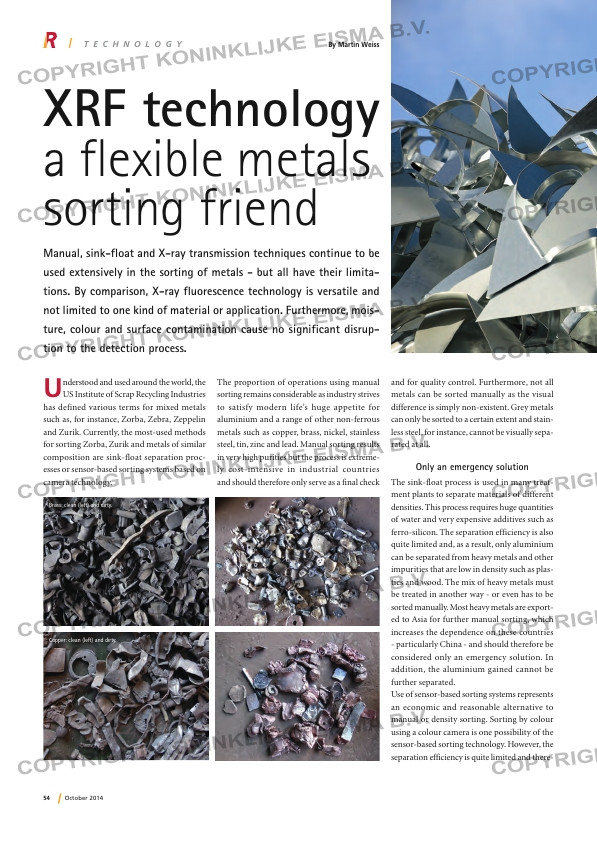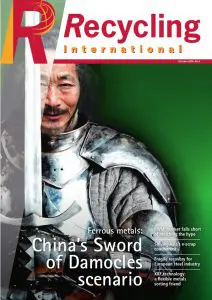Page 54 from: October 2014

54 October 2014
XRF technology
a flexible metals
sorting friend
Manual, sink-float and X-ray transmission techniques continue to be
used extensively in the sorting of metals – but all have their limita-
tions. By comparison, X-ray fluorescence technology is versatile and
not limited to one kind of material or application. Furthermore, mois-
ture, colour and surface contamination cause no significant disrup-
tion to the detection process.
Understood and used around the world, the US Institute of Scrap Recycling Industries
has defined various terms for mixed metals
such as, for instance, Zorba, Zebra, Zeppelin
and Zurik. Currently, the most-used methods
for sorting Zorba, Zurik and metals of similar
composition are sink-float separation proc-
esses or sensor-based sorting systems based on
camera technology.
T E C H N O L O G Y By Martin Weiss
Brass: clean (left) and dirty.
Copper: clean (left) and dirty.
The proportion of operations using manual
sorting remains considerable as industry strives
to satisfy modern life’s huge appetite for
aluminium and a range of other non-ferrous
metals such as copper, brass, nickel, stainless
steel, tin, zinc and lead. Manual sorting results
in very high purities but the process is extreme-
ly cost-intensive in industrial countries
and should therefore only serve as a final check
and for quality control. Furthermore, not all
metals can be sorted manually as the visual
difference is simply non-existent. Grey metals
can only be sorted to a certain extent and stain-
less steel, for instance, cannot be visually sepa-
rated at all.
Only an emergency solution
The sink-float process is used in many treat-
ment plants to separate materials of different
densities. This process requires huge quantities
of water and very expensive additives such as
ferro-silicon. The separation efficiency is also
quite limited and, as a result, only aluminium
can be separated from heavy metals and other
impurities that are low in density such as plas-
tics and wood. The mix of heavy metals must
be treated in another way – or even has to be
sorted manually. Most heavy metals are export-
ed to Asia for further manual sorting, which
increases the dependence on these countries
– particularly China – and should therefore be
considered only an emergency solution. In
addition, the aluminium gained cannot be
further separated.
Use of sensor-based sorting systems represents
an economic and reasonable alternative to
manual or density sorting. Sorting by colour
using a colour camera is one possibility of the
sensor-based sorting technology. However, the
separation efficiency is quite limited and there-
RI8-Alu sorting.indd 54 06-10-14 17:41



